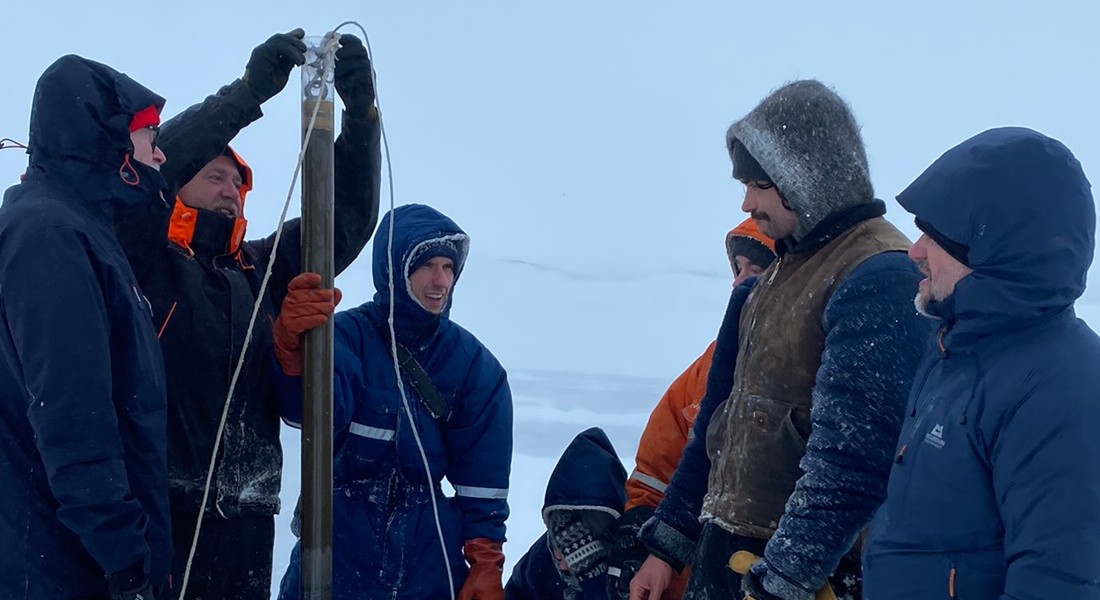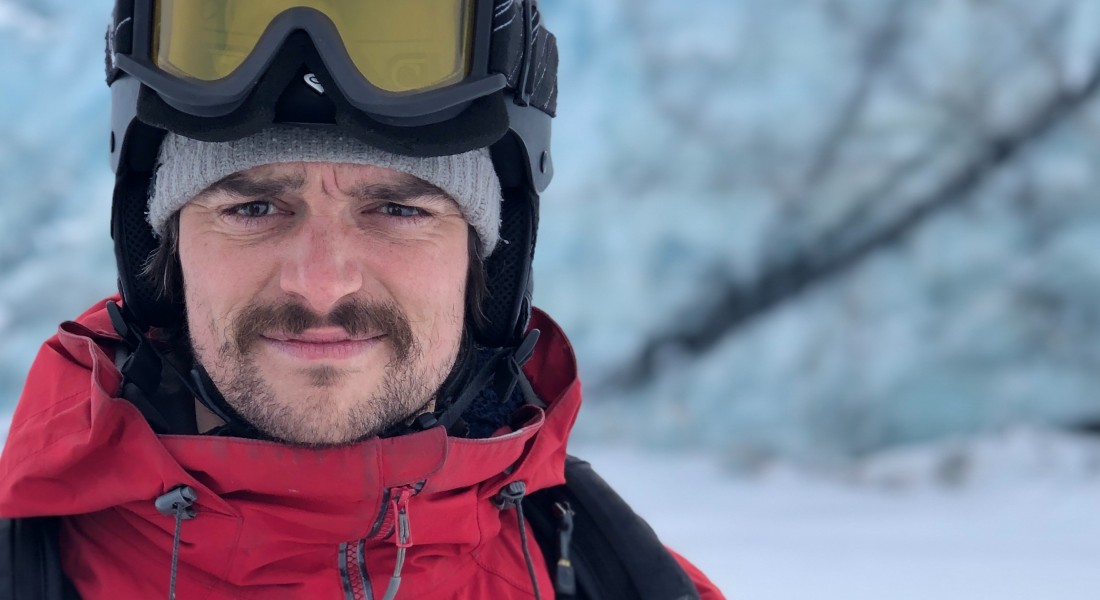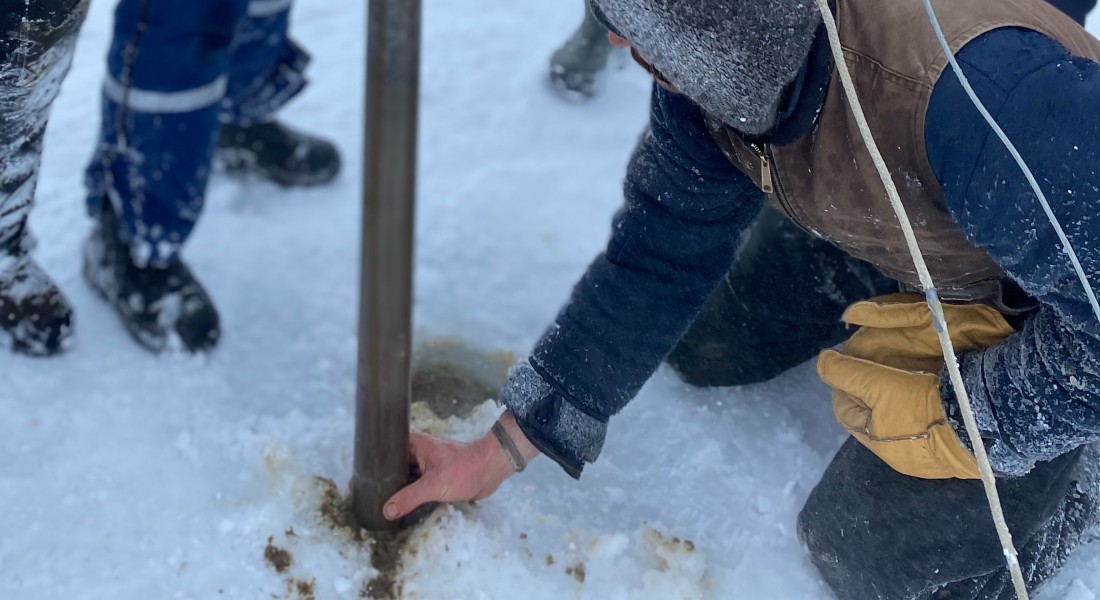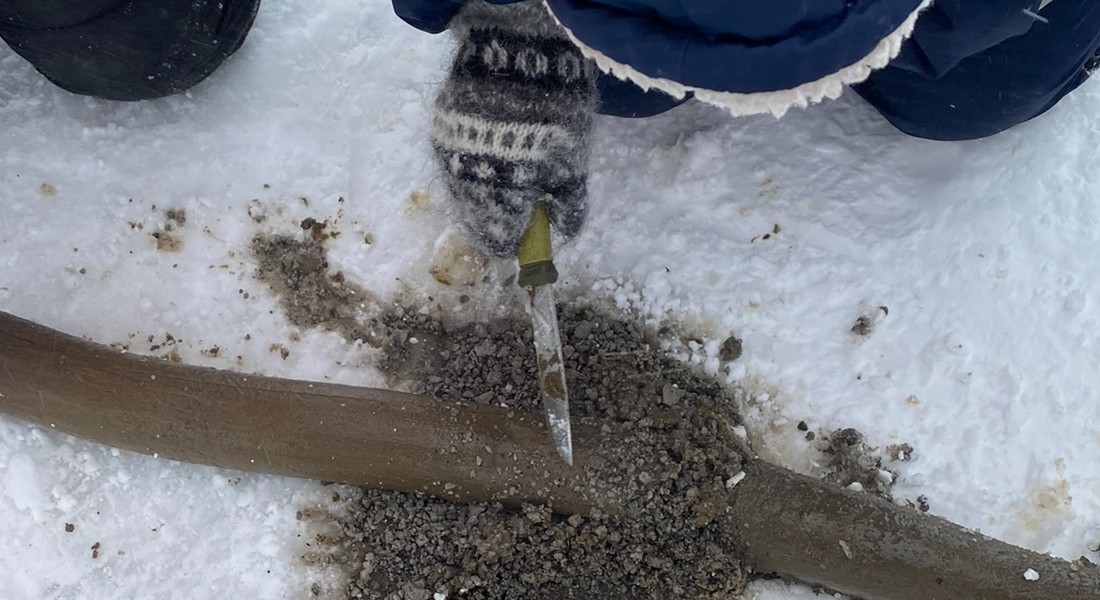39 Lakes Cored – and Counting
In mid-March ROCS postdocs joined scientists from GLOBE institute, GEUS, the University of Iceland, and the University of Copenhagen for coring of the project’s 39th lake. The coring took place on Valavatn, a small lake perched on Fróðárheiði moor on the Snæfellsnes peninsula in Iceland, an area well known as home to the glacier Snæfellsjökull which takes centre stage in Jules Verne’s 19th century novel. Although the field sported few similarities with the Verne’s fictional journey to the centre of the earth, there was a certain aura of adventure as the ROCS team and scientific collaborators made their way in a snow storm along the frozen lake, and to the coring site.
Valavatn is the thirty-ninth lake cored on behalf of ROCS, but why this particular lake and what makes it a good site for coring? “Lakes have been targeted based on numerous factors, but we would like to have sample sites that span (modern) climatic and environmental gradients across Iceland,” says ROCS postdoc and glacial geologist Wesley Randall Farnsworth, who has led the lake coring. “Specific lakes have also been targeted due to their proximity to known settlement sites/ruins,” he continues, “Additionally, a handful of the target lakes have been sampled with hopes of identifying some of the earliest sedimentation following the last deglaciation.” Lakes are excellent record keepers, storing a data of human and non-human changes in close relationships with environmental and climatic variations through their sediment. Coring lets these records emerge as samples that can be analysed and interpreted to give insight into relationships between environmental and climatic factors, and even humans. “Lake records are high resolution multi-proxy recorders of shifts in climate and environment,” explains Dr Farnsworth, “and techniques like eDNA can be used to detail the island´s colonization by plants and animals. Furthermore, it can inform us of the timing, style, and processes of Icelandic Settlement by humans and their subsequent land-use.”
Lakes are excellent record keepers, storing a data of human and non-human changes in close relationships with environmental and climatic variations through their sediment. Coring lets these records emerge as samples that can be analysed and interpreted to give insight into relationships between environmental and climatic factors, and even humans. “Lake records are high resolution multi-proxy recorders of shifts in climate and environment,” explains Dr Farnsworth, “and techniques like eDNA can be used to detail the island´s colonization by plants and animals. Furthermore, it can inform us of the timing, style, and processes of Icelandic Settlement by humans and their subsequent land-use.”
Although most understandings from the lacustrine sediment cores will be retrieved via intricate techniques such as ancient DNA analysis, parts of Valavatn’s record presented themselves the moment they reached the surface. Among them, the SN1 tephra layer which originated in an eruption in the Snæfellsjökull glacier approximately 1800 years ago which

The tephra from the Snæfellsjökull eruption gives a brief, even crude, glimpse into the wealth of information inherent in lake sediment. A significant part of the ROCS project is to collect sediment samples from lakes all around Iceland for analysis of ancient DNA which will indicate Iceland’s ecosystem structure through paleo-history. This extensive collection is no small feat, but the ROCS team estimates that the collection will eventually include cores from approximately fifty lakes. According to Wesley Randall Farnsworth, fifty lakes would be a decent network size although it is the quality and distribution of the lake records that matters most. Ultimately, however, it is the mixture of quality and quantity in the samples collected and analysed by ROCS that will allow the mapping of ecosystem structures through time. “A network of lake records, chronologically constrained by tephra and radiocarbon dates, can help us better understand the natural development of Iceland following the last deglaciation of the Icelandic Ice Sheet,” he explains.
